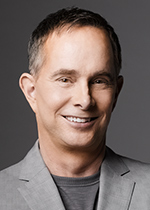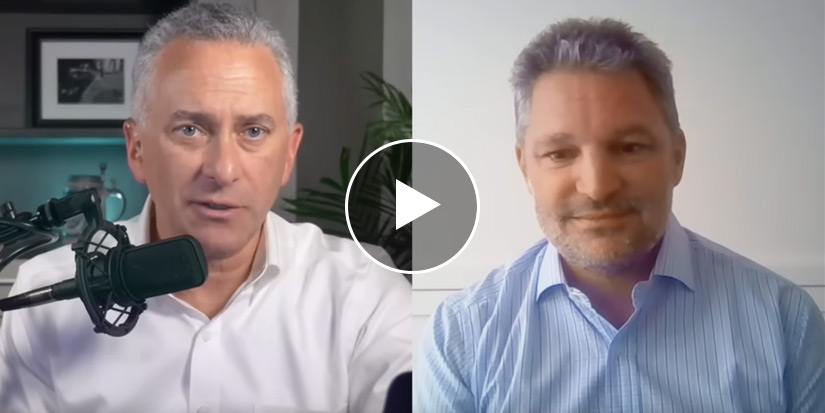Today, I am going to do something that I've never done. I am going to start a two-part series describing what is in my personal portfolio and why. Let me start by offering two caveats: This letter is in the “do as I say and not as I do” category.
First, my personal portfolio is not appropriate for 99.9% of investors. I would never let a client portfolio look like mine, as at times I take more risk than is likely appropriate for you (and maybe me!). As they say, don’t try this at home.
Second, this is not a Mauldin Economics portfolio. It is mine. Each of our editors has their own style. I would go nuts trying to invest like Jared Dillian or the others on the team. This shows the importance of choosing an investment advisor, because you also get their biases and preferences. Know what those biases are and if they align with yours!
That being said, let's dive in!
Navigating the financial landscape with John Mauldin:
In a world of economic uncertainty, the strength of your financial strategy holds the key to your future stability. Whether we're facing a recession, a potential soft landing, or even the specter of a market crash, the decisions you make today will shape your financial destiny. Click here for more details. |
The 80/20 rule—also known as the Pareto Principle—says that 80% of outcomes (or outputs) result from 20% of all causes (or inputs) for any given event. In terms of client portfolios, I tend to look at 80% of my portfolio as “core” and 20% as “explore.”
The younger you are, and the more money you have or make, might be a good reason to have a larger allocation of your portfolio in explore. But as you get older, your investments should be more core and especially focused on fixed income or equivalents.
My personal portfolio generally reflects that principle with one large exception: I have a generous (and likely growing) allocation to what looks more like venture capital. Longtime readers will not be surprised when I say it tends to be focused on biotech themes.
I developed this model with my long-time friend and partner Steve Blumenthal of CMG Wealth Management. I know his process well and we regularly talk at length about different portfolio components.
Portfolio construction is a hotly debated topic. Some believe you should keep 60% in stocks and 40% in bonds (or some variation) and just buy and hold. If you have the fortitude to sit through bear markets, that’s worked well for 70+ years. But again, you must accept lengthy dry spells and losing periods along the way.
Rather than select individual stocks and bonds, I typically let managers do my bond and stock picking. Just my preferred style. That generally happens through private offerings like hedge funds and/or private managers. I cut my teeth looking at these types of offerings (now over 30 years) so feel comfortable with my oversized exposure. Experience helps me (hopefully) understand the risks.
Note that this is just one way I express my macro views. There are other ways to do so. You do not have to be an accredited investor to express your own macro views, as well as your longer-term desired outcomes.
The hedge funds I own are mostly large, multi-strategy funds that are very boring and comparatively low volatility (at least by hedge fund standards). Most of those funds are on one platform and since 2014 we have been able to track them as a group. For the 7+-year period since 2014, the average annual return was roughly 7%, with the worst year being a slight loss (under 1%). The individual fund returns show a lot of variation, but I look at the average. I have changed funds during that period, often because my areas of interest changed.
I have some “non-classical hedge fund” partnerships and fixed-income private credit that are typically unhedged. You have to pay attention to credit risk, but many (definitely not all!) private funds have less risk than high-yield junk bonds and deliver better returns. At least from my personal perspective.
At my age, I keep reminding myself I need more fixed income. I like to focus on a niche area, typically in an underserved market where banks don't typically operate. The spreads are better, but then your risks vary from traditional bonds. I can’t stress enough the need for due diligence and diversification across funds.
I should note that there are a lot of good income funds and stocks that are not private and where you don’t have to be an accredited investor and have much lower minimums than private funds.
At one point these private funds were well over 50% of my portfolio. However, I have not allocated much new money to hedge funds over the last few years (with one small exception), preferring to pursue other opportunities. I see these larger, less volatile funds as part of my “core.”
I realize funds like these with less liquidity aren’t typically considered “core” investments. In my situation, I don't need instant liquidity in 90% of my portfolio, as I am still working and earning an income. That may change as I grow older.
Another principle to follow: Understand what you own! If you or your advisors don’t understand the private partnership world, then stay away!
I've spent almost 30 years analyzing private funds, and that has given me a solid understanding of this space. I can tell you, though, that I don't bat 1,000%. There is always risk, and I have had some strike outs (haven’t we all?). Always know how much risk you want to take and where you want to take it. And size it appropriately!
There are multiple platforms that can access feeder funds into these larger hedge funds (and even some smaller ones if you are willing to do the due diligence). A good investment advisor can find those for you. Typically, you have to be an accredited investor and the minimums are in the range of $100,000 but can be much higher or smaller depending on the fund and the platform.
Now let’s look at one of my larger non-core holdings. (Next week we will look at others.) Genomics is an area you may already know I’m passionate about, both for advances in human science and in agriculture. I am intrigued with advances underway in bio-agriculture and gene editing—especially “nature identical” (read non-GMO) gene edited plant traits that improve crop yields and/or enable sustainable, low-carbon plant production.
You may be familiar with CRISPR technology that improves the speed and accuracy of genetic edits. It’s a tool that can accelerate research into diseases such as cancer and mental illness. It can also be used in bio-agriculture science.
A trait is a DNA characteristic. For example, some people are tall, some small, some blue-eyed, others brown-eyed. Some are more prone to a specific disease, others have stronger immune systems. Plants have traits, too, and this is where the science gets very interesting.
Farmers plant their fields with the goal of producing as much as possible, known as crop yield. But things like the weather and plant diseases are challenging. They also must deal with variations in genetic seed traits that can predispose plants to be weaker and less productive.
Gene editing can make plants resistant to drought or disease or insects. In turn, that means less irrigation and less chemical spraying, which saves money and the environment. Gene editing can also make plants far more productive and boost the yield of each plant. More yield means more crops and revenue.
The problem is that this technique produces crops that are considered GMO—genetically modified organisms—where a plant has been altered using genetic engineering. Many countries have, or are considering, banning GMO foods.
Cibus, Inc. (CBUS) has developed a way to solve this problem. The company’s editing process mimics how it happens in nature, exactly like evolution. There is no foreign DNA. The process just accelerates the natural process by several orders of magnitude.
In the US, Cibus’s process is considered non-GMO. The EU is nearing a vote that, if approved, will do the same. Regulators around the world are seeing how this process, by accelerating what happens in nature, can improve crop production and reduce chemical dependence for a growing world. Better for the crop, better for humans, and better for the planet.
I invested in Cibus on a private basis, but it is now public. Cibus did a reverse merger into a company that had assets and patents they think useful, but had financial issues. That merger happened June 1 of this year. Any track record you see before that on a quote was the old company. There was some selling among those older shareholders. I (rather obviously) think the stock price is currently way too low, but then I love all my “children.” That is good news for new investors, though, as the price is now not far from where I (and others) bought it on a private basis.
While it should be obvious, if the stock goes up my assets will go up. Cibus started out as “explore” and still is, but I have hopes that it becomes “core” as the years progress. I see this company as a very long-term play. Mauldin Economics rules state very clearly that I will notify you three days before I sell.
Important disclosures: John Mauldin’s investment with Cibus is completely separate, legally and financially, from his involvement with Mauldin Economics. The opportunity described above is not endorsed by Mauldin Economics, ME Research LLC, or any of its other partners.
John Mauldin is a large investor in Cibus and has acquired his position in the company at a lower valuation. John’s potential return could be enhanced by John’s endorsement of the company. One member of Cibus management has an investment in CMG Capital Management Group, Inc. John Mauldin is the Chief Economist at CMG Capital Management Group, Inc. This is not a recommendation to buy or sell any company. All investments carry risk, and you could lose all of your investment in Cibus.
If you like, you can learn more by going to the Cibus website to see their deck and this recent investment conference presentation (you’ll need to register to view it).
Long-time readers will know that I am bullish on energy (oil and gas in particular), precisely because the ESG movement, including numerous governments, is limiting both the amount of money and places that can be drilled for oil and gas. Economics 101 says that if you reduce a supply of something that has an increasing demand the price is going to rise. Felix Zulauf and others at my conference were talking about $120-$150 oil next year. In a normal world, that shouldn't happen, yet it is. I am taking advantage by becoming a partner in an oil operating program—a rather large change for me, as I had to close my broker-dealer firm in order to do so.
As you have seen above, my risk tolerance is likely higher than most. Even for those who share my views on energy, a less risky path is probably more appropriate for most people. You can invest in high-quality, dividend-paying energy stocks and focused ETFs. Rising oil prices, if I am right, should benefit those investments.
For those with true risk capital, I would invite you to see what we are doing at King Operating. We are physically drilling for oil and gas in older, underdeveloped fields planning to improve their value. Typically, the older fields were all vertical wells, but you can improve the value of that old field by using modern technology and doing horizontal drilling and fracking. It is similar to buying an older apartment complex in a great neighborhood, upgrading and renovating it, raising rents and then selling it to someone who wants to be in the apartment management business.
Our goal is to increase the proven and probable reserves in these older fields using modern technology, demonstrating the potential for the field. Let’s say there are 100 potential wells in a field, we might drill 5‒10, creating proven and probable reserves and taking some of the risk of drilling in older fields. Larger companies are quite willing to pay for that reduced risk plus proven reserves and that is what their shareholders want. (Oil and gas is a risky business and past performance is not indicative of future results.) It's more complex than that, but that is the essence.
I am putting the finishing touches on the first sections of what is a series I now call “The Future of Energy,” in addition to several other papers I have done and one where I explain why I am working with King Operating.
Starting next week, I will be doing 1‒2 webinars a week that you can join and plans are being made to visit multiple cities over the next few months where you and I can sit down and talk energy (and some macro of course!).
You owe it to yourself to understand the changes that are coming to the energy sector and to explore how you can benefit from them. In this and other papers my complete intention is to give you a fuller understanding of the multiple ways that you can invest in the oil and gas industry, and why I have chosen this particular approach.
Simply click on the link below and we will get the papers to you. (You must be an accredited investor to participate.) If you have questions for me, drop me a note. To the extent that I can, I will answer. If you want to join a webinar or dinner, click on the link at the end of the disclosures below and I and my team will be in touch.
Important disclosures: Note that John Mauldin’s association with King Operating is completely separate, legally and financially, from his involvement with Mauldin Economics. The opportunity presented above by John Mauldin in TFTF is not endorsed by Mauldin Economics, ME Research LLC, or any of its other partners nor do any of them have any financial or other interest in the described venture.
John Mauldin will be receiving significant financial benefits from investments made in this venture by investors. More specifically, as chief economist of King Operating, John is entitled to receive consulting fees as well as a significant interest in the fund’s general partner.
This opportunity is offered by King Operating and it is limited to accredited investors. Prospective investors should carefully review the offering memorandum and risks disclosure before proceeding.
Click here to download my reports on Why I Chose King, a discussion of risk and The Future of Energy on King Operating’s website and find out more.
Next week we get into the rest of my portfolio, including commodities and some biotechnology companies I like.
Shane had a marvelous time in London and Paris. I enjoyed seeing it all through her fresh eyes. It is clear we will have to go back, as there is still so much she hasn't seen. She got to spend time at Hever Castle, the home of Anne Boleyn. We took the train to Hever and since we didn’t book a taxi, had to walk literally through farm pastures and trails to get to the castle. She patiently sat with me while I obsessed over Churchill 's War Room. And the 80th birthday party for Charles Gave was outstanding.
While nothing is in stone yet, I’m making plans to go to New York, the east coast of Florida, and likely the west coast of Florida in the next month or so to do client presentations for King and meet with friends. I will say that flying seems to take more out of me than it used to.
And with that, I’ll hit the send button and wish you a great week. Follow me on X.
Your glad to be back home in PR analyst,






